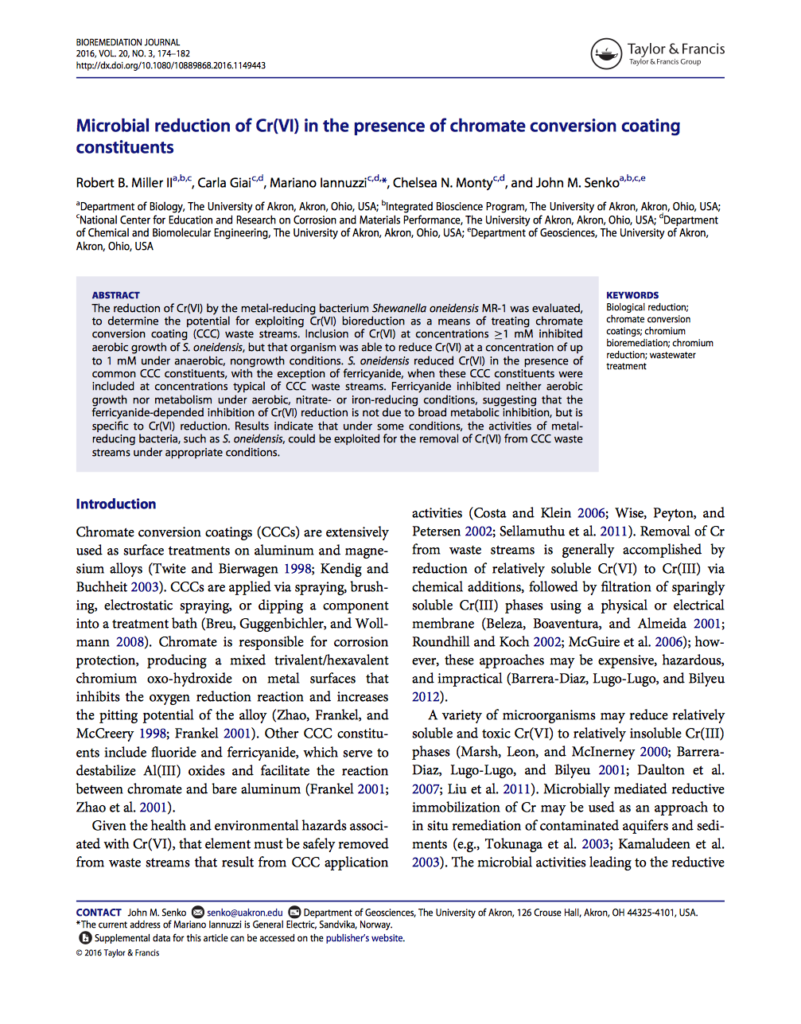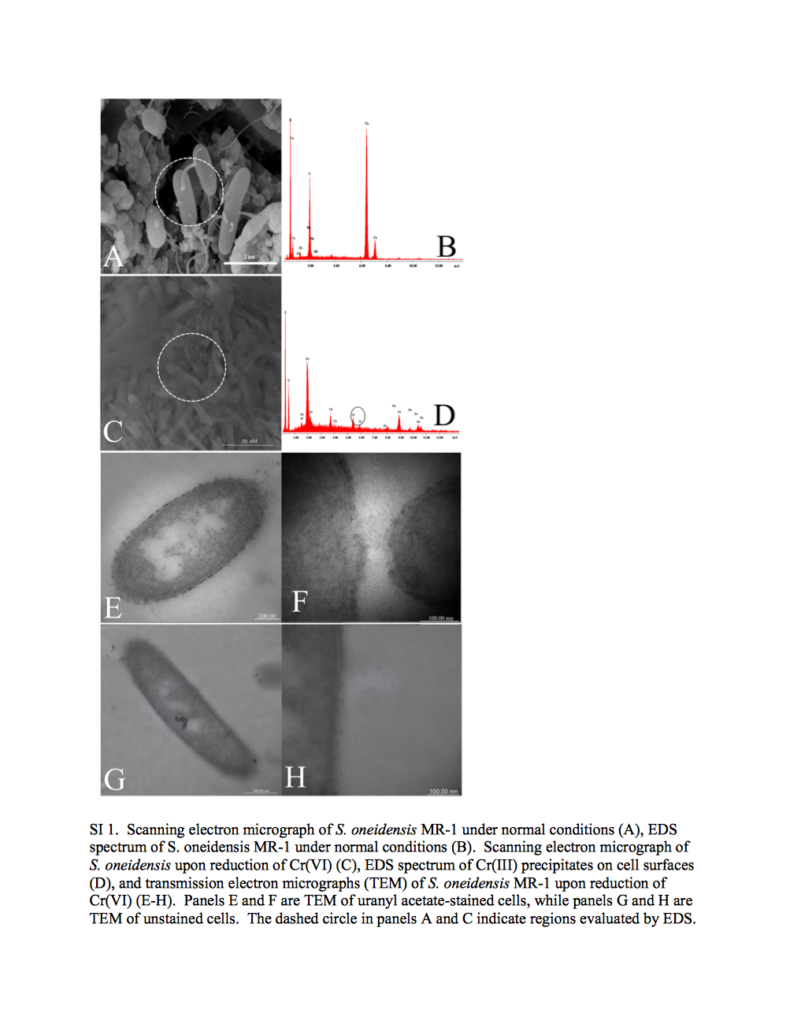Admittedly, this article is not strictly about corrosion. However, it shows how biological electrochemical reactions can be used to bioremediate hexavalent chromate, i.e., Cr6+ or Cr(VI), waste waters in the presence of other potentially toxic species used in chromate conversion coatings.
Why is it important?
In this paper my former Ph.D. student Bobby Miller, Dr. Carla Giai, Prof. Chelsea Monty, Prof. John Senko and I adventured in the bioremediation arena. We studied the ability of Shewanella oneidensis to biologically reduce hexavalent chromate species to the more inert and less toxic Cr3+ in the presence of compounds used in chromate conversion coating formulations. Treating waste waters contaminated with Cr6+ species is of the utmost importance given its carcinogenic effects.
We found that bioremediation of CCC effluents by s. oneidensis is technically possible and could be an economically viable alternative. You can read more by following the link below.
Abstract
The reduction of Cr(VI) by the metal-reducing bacterium Shewanella oneidensis MR-1 was evaluated, to determine the potential for exploiting Cr(VI) bioreduction as a means of treating chromate conversion coating (CCC) waste streams. The inclusion of Cr(VI) at concentrations ≥1 mM inhibited aerobic growth of S. oneidensis, but that organism was able to reduce Cr(VI) at a concentration of up to 1 mM under anaerobic, nongrowth conditions. S. oneidensis reduced Cr(VI) in the presence of common CCC constituents, with the exception of ferricyanide, when these CCC constituents were included at concentrations typical of CCC waste streams. Ferricyanide inhibited neither aerobic growth nor metabolism under aerobic, nitrate- or iron-reducing conditions, suggesting that the ferricyanide-depended inhibition of Cr(VI) reduction is not due to broad metabolic inhibition, but is specific to Cr(VI) reduction. Results indicate that under some conditions, the activities of metal-reducing bacteria, such as S. oneidensis, could be exploited for the removal of Cr(VI) from CCC waste streams under appropriate conditions.
[altmetric doi=”10.1080/10889868.2016.1149443″ type=”donut” condensed=”true” data-hide-no-mentions=”false” popover=”right” details=”right”]
Citation
Miller, R. B., Giai, C., Iannuzzi, M., Monty, C. N. & Senko, J. M. “Microbial reduction of Cr(VI) in the presence of chromate conversion coating constituents.” Biorem. J., 1-9, doi: 10.1080/10889868.2016.1149443 (2016).

